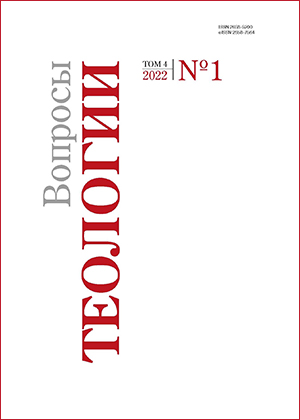Female images of God in the works of Church Fathers and other Christian writers before the XIX century
DOI:
https://doi.org/10.21638/spbu28.2022.108Abstract
There is a common misconception among some Christians that the idea of God as a feminine principle is strongly influenced by liberal theology and queer studies of the 20th and 21st centuries. In part, this is true: attention to women’s legal awareness in modern Europe raises the question of the relationship between the sexes. However, carefully studying earlier periods of the history of church creativity, we find that saints and heroes of faith of different denominations came to the conviction that God is the Mother and has traditionally female characteristics, not at all in connection with the struggle of the fair sex for their rights, but thanks to personal mystical experience and perception of the Trinity as a prototype of the earthly human family. The article is devoted to the study of the topic of the femininity of God in general and the Holy Spirit in particular. The author suggests looking at the Holy Trinity through the prism of the outstanding writers of the Christian world from the 1st to the 19th centuries, showing that the modern theology of femininity has a long and rich prehistory, rooted in Christian antiquity and closely connected with family archetypes.
Keywords:
Christianity, theology, feminism, femininity, pneumatology, Christology, motherhood of the Holy Spirit
Downloads
References
References
Downloads
Published
Issue
Section
License
Articles of "Issues of Theology" are open access distributed under the terms of the License Agreement with Saint Petersburg State University, which permits to the authors unrestricted distribution and self-archiving free of charge.




